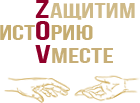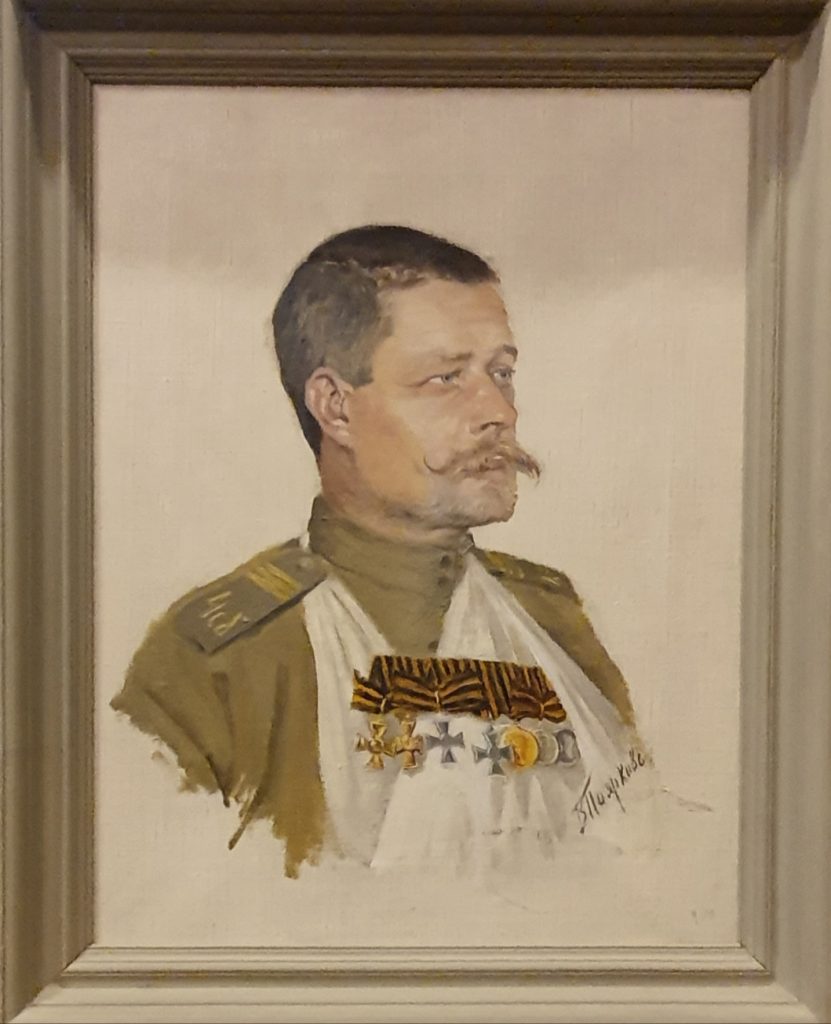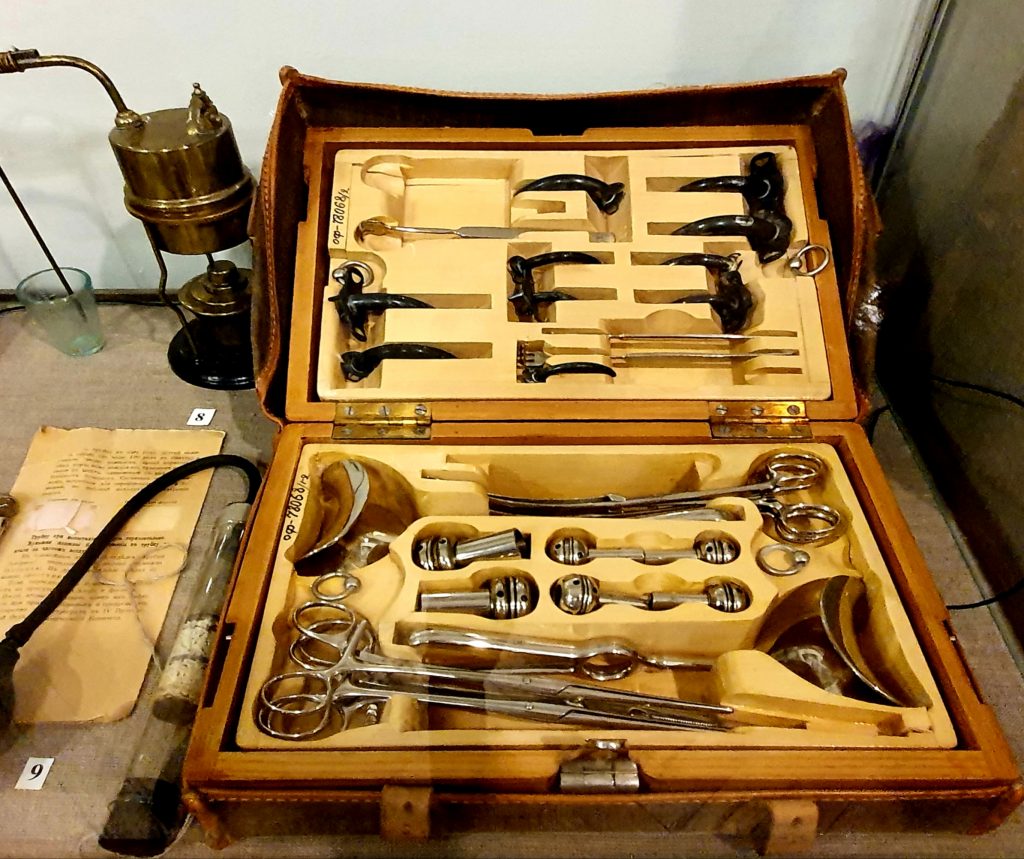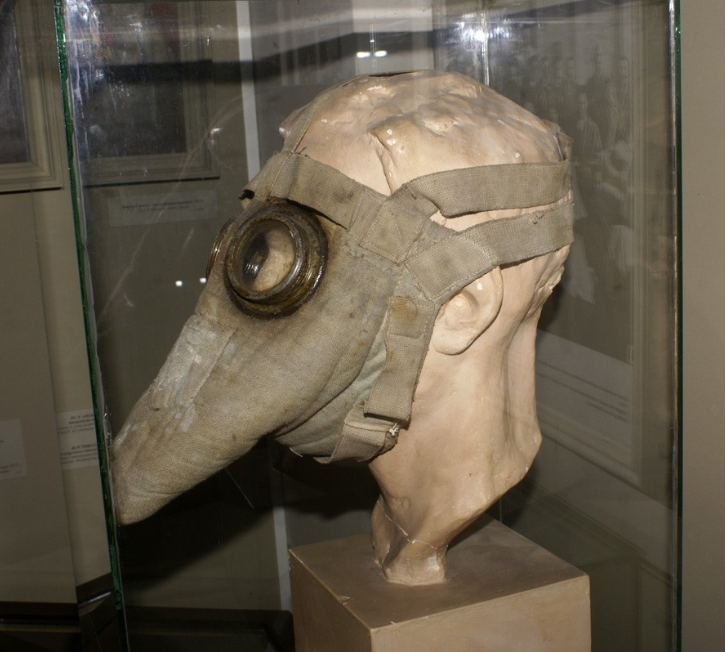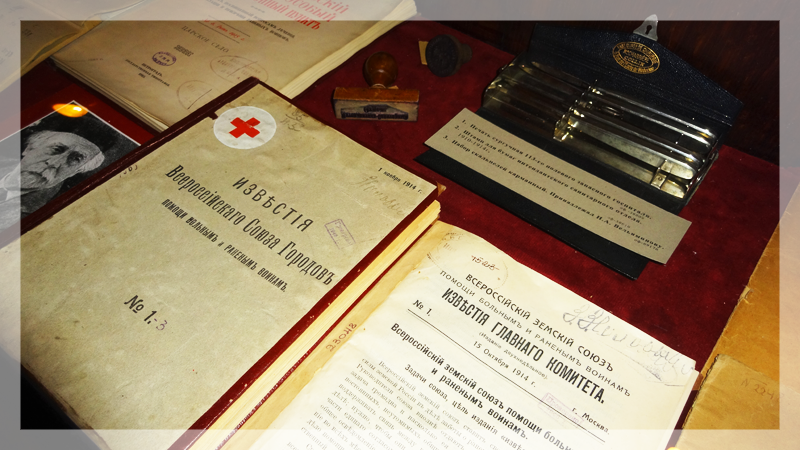World War I of 1914-1918 exceeded all previous wars. In this war, all types of new weapons were already widely used: tanks, aircraft, long-range guns. The use of new weapon of mass destruction – chemical weapon agents (CWA): mustard gas, chlorine and phosgene, — took a special place in the history of World War I. The exposition contains the first personal protective equipment against CWA.
Here you can also find documents that determined the activities of the Army Medical Service, as well as photographs of its leaders. Among them — Duke Alexander of Oldenburg, who, from September 3, 1914, held the post of Supreme Chief of medical and evacuation unit of the Russian army, and N.A. Velyaminov, a major military medical figure, a talented surgeon, the head of the Military Medical Academy (1910-1913), and Chief Field Health Inspector of the Russian Army.
During the First World war, military health societies were established in Russia, such as the All-Russian Zemstvo Union and the All-Russian Union of Cities.
The Russian Red Cross Society took the most active part in providing aid to the wounded and sick, as evidenced by the exposition materials describing the establishment of the "Institute of Consultant Surgeons". It consisted of many well-known surgeons, including V.A. Oppel, S.S. Girgolav, N.A. Velyaminov, and N. N. Burdenko (their photos are presented on the stand). It was during the First World War that Vladimir Oppel put forward the idea of a consistent sequence of surgical treatment for the wounded.
A visual representation of the events of that time is demonstrated by materials showing the mass heroism of medical personnel.
